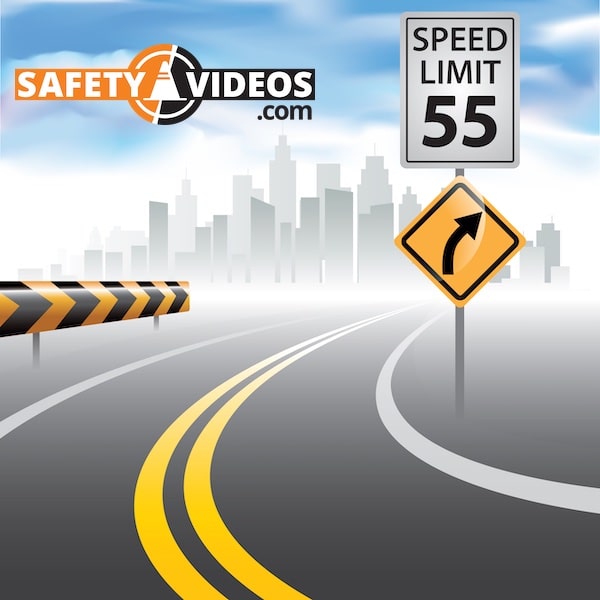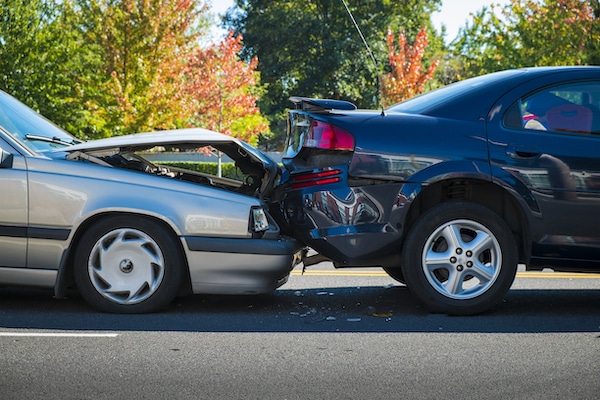11+ Best Driving Safety Tips – [Updated for 2023]

When drivers are behind the wheel, driving safely is non-negotiable and should always be the top priority. These days, distractions are everywhere, and with the rapid development of technology, it looks like we’re going to be more distracted than ever.
And with this lack of concentration comes inevitable accidents and fatal crashes, which obviously, everyone wants to avoid. While we can’t control everything that goes on on the road, there are things we can do to reduce driver errors. From wearing seat belts to staying off your cell phone and eradicating distracted driving once and for all, it’s time for everyone to become a responsible driver.
Many people want to know, “What are the 3 skills required for safe driving?”. But the truth is that driving safely takes much more than just three simple steps. In fact, we’ve listed 12 driving safety tips to make sure you don’t forget anything. These tips, along with our other workplace safety tips, can keep you and your employees safe while driving or working. We also have a guide on hand safety tips if you are interested in those.
Ready for the top tips that will keep you safe on the road? We have everything you need to know to make informed decisions about how you drive.
1. No Driving Drunk
In the US, over 30% (about a third) of all car accidents involve drunk driving, making it a leading cause of crashes. In 2008, these types of accidents caused 11,773 deaths. The tragedy is that each of these accidents could have been avoided if people had decided not to drive drunk.
When people get into their vehicle after consuming alcohol, it can cause a variety of impairments that can lead to car crashes. Even a small amount of alcohol can reduce a person’s reaction time and compromise their coordination. When consumed at higher levels, drivers will experience double or blurred vision and, in serious scenarios, can fall unconscious.
As well as being a bad idea, it’s also illegal. If you are caught driving under the influence of alcohol, you could end up in jail. To avoid causing accidents and putting other drivers, pedestrians, and yourself at risk, the easiest thing to do is not to drink if you’ll be driving. If you drink, ask a friend to drive you home, call a cab, join a ride-sharing service, or appoint a designated driver before you go out.
2. Practice Defensive Driving
Another major reason why vehicle accidents occur is when people practice aggressive driving. This is mostly when people are in a hurry and want to reach their destination as quickly as possible. Typical actions of an aggressive driver include tailgating ( a recipe for classic rear-end collisions), making unsafe and poorly timed lane changes, and disregarding the speed limit.
When aggressive drivers entertain this sort of behavior, it puts everyone on the road at great risk – not just the person who is driving.
So, aggressive drivers, listen up. Defensive driving is much more appealing in terms of road safety. If you find yourself becoming impatient and wanting to go at higher speeds, changing lanes when it’s unsafe, or driving too close to the car in front, think about how you can drive defensively to avoid accidents. First, relax and take a deep breath – your present anger is not as important as the life of other drivers, pedestrians, and yourself.
And if someone else is driving recklessly and you drive defensively, know that you cannot control their irresponsible actions. Instead, focus on your safe driving skills to decrease the chances of an accident. Also, you want to avoid road rage at all costs and should check out our quick write up on “What is the Most Common Form of Road Rage?” as well.
3. Pay Attention to the Road
You’d be surprised how many people drive through a stop sign because they’re not paying attention. If you know you are often guilty of distracted driving or have a penchant for daydreaming when behind the wheel, you must be extra vigilant.
So, before you drive, ensure gadgets like cell phones or other things that could distract you, like food and drinks, are tucked away. Even things like switching off the radio station can cause you to lose attention, so you must always stay alert. Turning cell phones off is ideal if you can.
If you’re becoming distracted because you’re hungry or thirsty, the most sensible thing to do is pull over where it’s safe and recharge your batteries. If you’re near a gas station or a roadside diner, quickly stop there – your body needs refueling just like your car.

4. Stick to the Speed Limits
A posted speed limit isn’t just there for fun; it’s put in place for a reason. Each limit is designed to keep the roads safe and stop traffic crashes. They help to manage vehicles on the road and keep a disciplined order to promote a safe following distance to reduce accidents.
Speeding is another leading cause of crashes, even though it’s one of the easiest things to avoid. You should ensure your vehicle obeys federal regulations and goes at the legal speed at all times, even if you need to merge onto a busy highway.
If bad weather is upon you when you’re driving, you should adhere to the reduced speed limits to maintain control of your vehicle. It’s also extra important you maintain a safe distance between other vehicles if the weather is unpredictable and make sure your brake lights are working if you have to stop suddenly.
While you may get to your destination a little slower than you would have liked, this obedience could save your life.
5. Don’t Drive in Bad Weather
Beyond just the general safe driving tips of being extra cautious when it’s rainy, severe weather is an entirely different beast. Winter driving can be especially dangerous, depending on where you live. If you have seen the weather forecast and it predicts heavy rain, snow, fog, sleet, etc., try to avoid driving if you can. Inclement weather conditions can cause impaired drivers to lose control of their vehicles and veer off the road.
If you have to drive in such severe conditions, be sure that your vehicle is functioning properly and that you have analyzed and prepared for the situation as best as you can. For example, are your windshield wipers working so that you can improve your visibility during heavy rain and snow? Can you see through your rearview mirror, or is the weather too bad? Can you see other motorists in front of you? Do you have properly inflated tires? Does your cruise control work? Does your brake pedal work effectively? Will you be practicing safe and defensive driving?
All of these safety tips are incredibly important when winter driving, and can ultimately reduce vehicle accidents.
6. Get Enough Sleep
If you’re overtired and struggling to keep your eyes open, do yourself, your vehicle, other drivers, and pedestrians a favor — don’t drive. Even on a highway that is relatively straight, if you fall asleep driving, you will eventually drift, end up accidentally changing lanes, and ultimately cause a highway crash.
You may think that being a little fatigued is nothing to worry about, but being slightly drowsy is enough to reduce your attention levels and put yourself and other vehicles at risk.
This one has a simple solution – get a good night’s rest, and not just on the night before you drive, but on a regular basis. For adults, 8 hours is the recommended amount of sleep, and if you do not achieve this, your ability to focus will be impaired. So, if you do feel as though you’re slightly drowsy when you’re driving, pull over as soon as it is safe to do so.
If you have someone else in your car and they have the correct insurance and feel OK to drive, see if they will take over and take you to your destination.
7. Wear Seat Belts and Make Sure Others Wear a Seat Belt
You don’t need the National Highway Traffic Safety tips booklet to tell you that driving without a seat belt is illegal, not to mention dangerous. Whether you’re the driver or the passenger, it’s imperative you ensure everyone in your vehicle is belted up safely. You are also responsible for making sure children are securely fastened into their car seats, too.
When they are worn correctly, they will stop you from being thrown through the windscreen and straight out of the car. Statistics from the NHTSA show that more than half of all car crash fatalities were those who were not wearing seat belts. And what’s even scarier is the age range of those fatalities – 70% of the victims are between a child’s age of 13 and 15.
So, the next time you decide not to wear a seat belt in a motor vehicle, think about all of the people who would have survived had they followed this simple rule. Basically, if you are ever unfortunate enough to be involved in a road traffic accident and you are wearing a seat belt, you are more likely to survive.
8. Be Extra Cautious Around Larger Vehicles
Drivers in smaller vehicles should always be aware of buses, RVs, and large trucks, as they can be very dangerous. These commercial drivers all have larger blind spots due to the size of their vehicles, which means your car may not be visible. They also need plenty of room to turn and brake, so you should make sure you always allow them extra space. Many of these larger vehicles will have signs somewhere on the body to warn other drivers that they won’t be able to see you.
On a two-lane road, you should also avoid trying to pass them. It’s never worth the risk, and you also might end up getting stuck behind them for a long time, and that’s just an inconvenience. Be sure to just stay as far back as you can until it is safe to merge into a different lane. Plus, if you sense a larger vehicle is tailgating you, as soon as it is safe to do so, let the other driver pass.
It also doesn’t matter how much of an experienced driver you are – by exercising caution when it comes to large vehicles, you will reduce your risk of becoming injured, or worse, in an accident. And don’t forget, large trucks, machinery and other things with wheels aren’t only on the roadways. They are very common on construction sites so you have to be careful there as well. (We actually have a full set of safety tips for construction that you can check out as well.)

9. Read Your Vehicle Owner’s Manual
Every car is different, so before you take it on the road, read the manual that comes with it. It explains all of the features in detail, so you can be aware of what everything means and where everything is. They also tend to have safety tips about what to do if you break down or if something goes wrong in your car.
For example, if a warning light comes on and you don’t know what it means, you can refer to your manual to see if it is something you can fix yourself. It may just be that you have a door open or your handbrake isn’t off properly. If the symbol is something more serious, you know that you will need to call your breakdown cover or call your mechanic.
10. Adhere to Road Signs
Whether they’re turn signals, stop signs, traffic lights, or any other road sign, adhering to their instructions is imperative regarding road safety. They’re not rocket science either – if you are driving and you see a red light, stop. Traffic could be coming from different angles or towards you, so the most sensible (and legal) thing to do is obey them.
Drivers who ignore road signs are actively avoiding driving safely, which will put everyone in the vicinity at risk. These safe driving tips are not just there for fun, they are there to protect us.
11. Plan Your Route
Another important one from our driving safety tips list is ensuring you plan your route if you are unfamiliar with where you are going. Whether you’re one of the commercial drivers or average drivers on the road, having your route mapped out will allow you to focus on other more important aspects of driving, like every single tip listed above.
If you’re going on a trip and taking roads you’re unfamiliar with, study your journey a few days before to get a general idea of where you’re going and what routes you’ll be taking. Try and gather a few locations or signs that you will recognize as well, as this will make you more confident of where you are going.
A driver who is more comfortable with their route is a better driver overall, as they only then have to concentrate on actually operating the vehicle.
12. Share the Road
Always remember that you are not the only driver on the road. While you may be confident operating your car and familiar with the route you are taking, not everyone feels as comfortable when driving.
With this in mind, ensure you share the road with other cars. Be patient, gracious, and respectful, and treat other drivers how you would like to be treated.

Safe Driving Everyone!
What is the most important rule of driving safely? While concentration, patience, and never using your phone are all critical in their own right, there isn’t one rule that is more important than another. Instead, adhering to them all will ensure you stay as safe as you possibly can on the roads at all times.
And now that you’re familiar with all the above driving safety tips, you can put them into action and become a better driver, which is better for yourself and everyone around you. There is always room for improvement, no matter how long you’ve been behind the wheel, and there is always room for exercising extra caution.
So while it might not be as easy as “What are 5 safe driving practices?”, following the above tips and safety precautions will keep you and others safe out on the road. So, what are you waiting for? The next time you take your car for a spin, remember these tips and make the roads of wherever you live a much safer place!